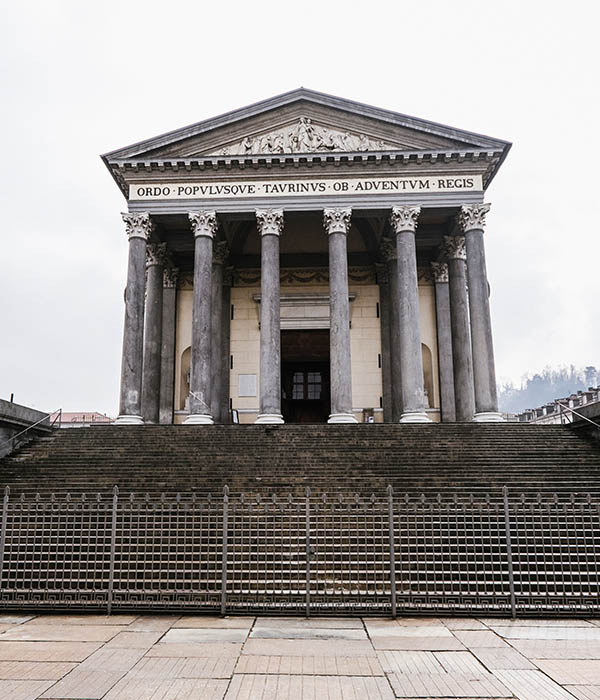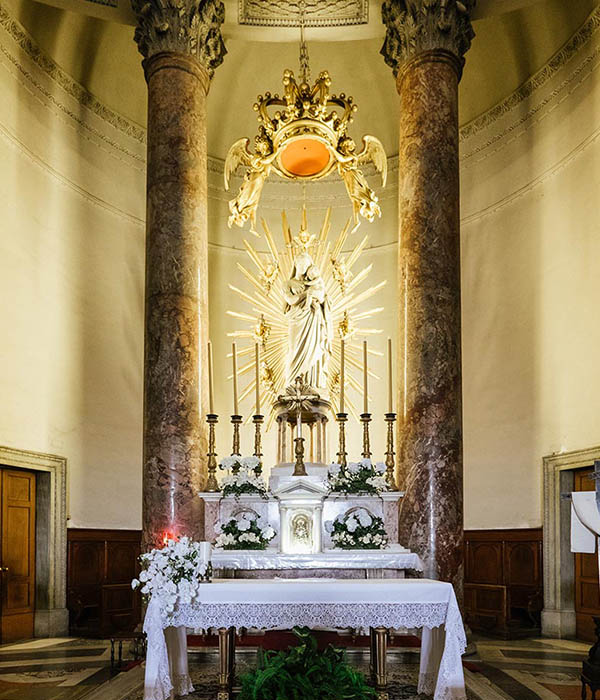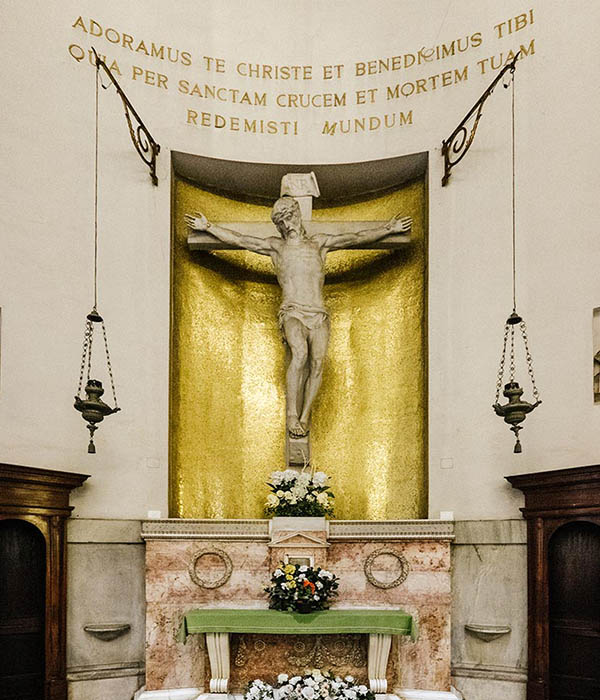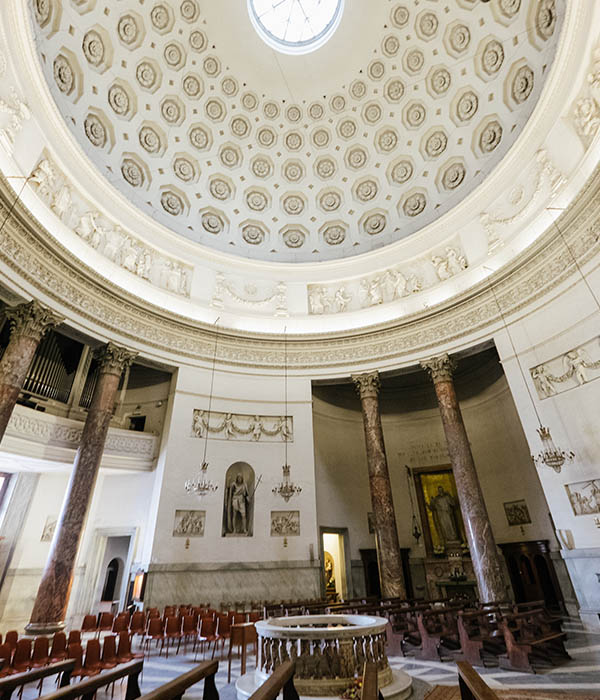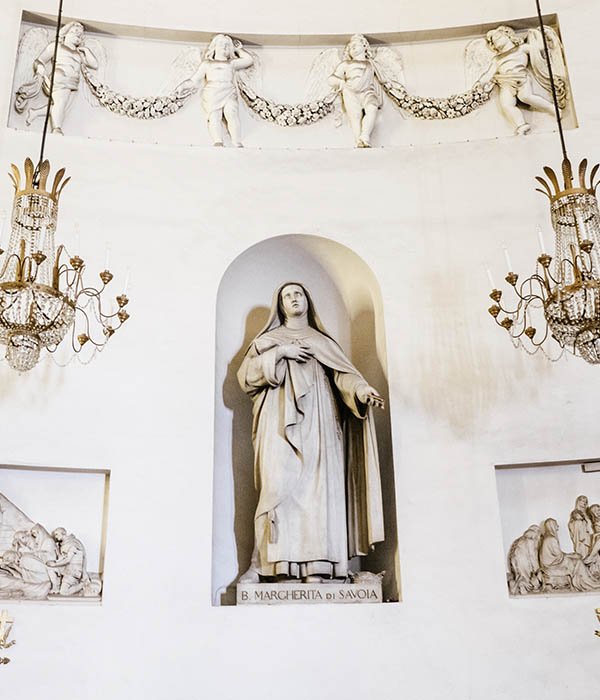Chiesa della Gran Madre di Dio

Piazza Gran Madre di Dio 4, Torino



From 1798 to 1814 Turin was occupied by the French. The years of Napoleonic domination deeply and irreversibly changed the appearance of the city by dismantling the fortifications that surrounded the perimeter of the city and demolishing the city gates that limited the entry into Turin.
The town’s layout, revised in the French period, also introduced a territorial concept which considered, for the first time, the rivers as a ‘part of the town layout through the creation of “dual piazzas” straddling the rivers. Within this new concept the area around the Po became one of the most important points of change. In 1810 the stone bridge that crosses the riverway was begun according to a design by Claude Yves Joseph La Ramée who was the first engineer to apply this new concept of space.
Read more
In 1814 the Savoys returned to the city of Turin after 16 years of exile due to the French domination. The Municipality immediately proposed a celebration of their return with the construction of a monument, the nature of which was not yet specified, to commemorate this event. The need to design spaces that were previously occupied by the fortification and the idea to build the “votive temple” in honour of the Savoys’ return home, must be interpreted as one project; the church was to the termination of the long perspective succession that connects the central square of the city, Piazza Castello, to the hills.
After the church was designed, it was necessary to design a square on which it would stand (Piazza Gran Madre) and another square opposite it on the other side of the river (the present-day Piazza Vittorio Veneto), according to a concept resembling the French one. ln 1818 the building of the church was commissioned to Ferdinando Bonsignore. Building the church was a long and drawn out process, mostly due to the lack of funds. lt was inaugurated on May 20, 1831 in the presence of King Charles Albert.
The church of the Gran Madre di Dio is a building with a central plan, according to the model of the Pantheon in Rome, a pagan temple which became the prototype of Marian churches in the Middle Ages.
The church is built on a high base which puts it on the same height as Piazza Castello and is preceded by a stairway that rises behind the monument to Victor Emanuel I between the statues of Religion and Faith, designed by Giuseppe Gazzini in 1885.The dedication of the church to the return of the Savoys is announced in the inscription on the trabeation of the pronaos in front of the building: Ordo Populusque Taurinus ob Adventum Regis. The connection of the political event to the religious events demonstrated by the use of classical metaphors to narrate religious episodes, with a continuous alternation of characters of religious history and political personages; the bas-relief of the pediment, the Virgin and Child receiving a gift from the decurions, by Francesco Somaini, epresents the dedication of the church.
The client (the municipal government) represented by the decurions, gives thanks to the Holy Virgin by building a Church, which is the gift.On the sides of the entrance doors two niches contain the sculptures of St. Mark, created by Giuseppe Chialli, and St. Charles Borromeo, by Giuseppe Bogliani. The interior of the church is on a circular plan with two lateral Chapels. The base of the dome is decorated with bas-reliefs that narrate the episodes of the life of the Holy Virgin, reinterpreted in the classical style. In the lateral niches there are four statues: St. Maurice, by Angelo Bruneri, the blessed Margaret of Savoy, by Antonio Moccia, the blessed Amadeus of Savoy, by Carlo Canigia, and St. John the Baptist, patron saint of the city, by Giuseppe Bogliani.The statues of the blessed Margaret and Amadeus emphasize the close relationship of this work with the House of Savoy.Besides her government activities, Margaret of Savoy (1390-1464), beatified in 1566, took care of the ill and spent her life in prayer. She was a faithful supporter of the supremacy of the Pope and when her cousin, Amadeus VIII, proclaimed himself anti-Pope, she devoted her energies to dissuade him from his intentions. Amadeus IX (1435-1472) is remembered by popular tradition as a generous suzerain, attentive to the needs of the poor and sick, whom he often visited in the hospital. Considered a saint in his life, he was proclaimed beato (blessed) in 1677.On the high altar a statue of the Virgin and Child stands out, designed by Andrea Galassi.The ossuary of the fallen in World War I has been under the church since 1932
Texts by the Guarino Guarini Association
Photographs by Andrea Guermani for FCSP – © all rights reserved
